Below is an excerpt from the recent edition of Bitcoin Magazine PRO, Bitcoin Magazine’s premium market newsletter. To be the first to have these insights and other on-chain Bitcoin market analysis delivered directly to your mailbox, APPLY NOW.

Bitcoin ordinals and inscriptions
A recent somewhat controversial use of Bitcoin is the revolutionary application of the Taproot soft fork, which will be integrated into the protocol in 2021. Ordinal theory is a way of serializing the individual units of Bitcoin and giving these particular Satoshi an “ordinal number”. The creator of this numbering scheme, Casey Rodarmor, explains it in his book. blog “Satoshi are numbered in the order they were mined and transferred from transaction input to transaction output in first-in, first-out order.”
By serializing these individual Satoshis and utilizing the Taproot upgrade, Bitcoin users can also include arbitrary data directly on the blockchain. This was already possible with text using the OP_RETURN function, but these new “inscriptions” can be anything: jpegs, short sound clips, even simple games.
There is a growing debate in the development community about what it means to store all this data directly in Bitcoin and what it means for users who want to run a full archive node. We would like to delve into how the inscription is currently affecting the Bitcoin fee market and what it might look like in the future.
Efficient use of block space
By its very nature, inscriptions are larger files, so they take up more of the limited space of each Bitcoin block. The user creating the inscription has to pay the fees required to send the transaction, but thanks to his fork of his SegWit software in 2017, the inscription is included in the witness data and only discounted rates apply.
Ordinal officially launched on January 21, 2023. Less than three weeks later, according to Pierre Rochard, vice president of research at Riot Platforms, the inscription has already taken up 50% of Bitcoin’s blockspace. occupies.
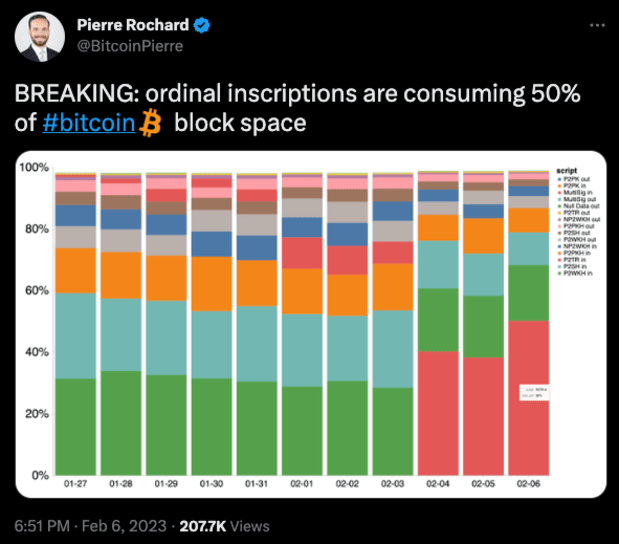
The Bitcoin fee market is constantly changing. If there is a high demand for transactions on-chain and users want their transactions to be included in the next block, the fees will rise. Conversely, when demand is low and users do not need timely confirmation of their transactions, the commission rate will drop.
Whether or not these inscriptions should be considered “acceptable” usage of Bitcoin, the market will determine the appropriate fee for those wishing to include this arbitrary data in each block. If transaction fees rise enough, less important or smaller Bitcoin transactions may be removed from the market and moved to Layer 2 protocols such as Lightning. These additional layers have always been game-theoretic hypotheses of Bitcoin’s fee structure. Hal Finney Prophecies in 2010.
history block weight
This is not the first time a mempool has filled up with a significant number of transactions. As mentioned above, the Bitcoin fee market is dynamic, with cycles of high fees creating endless possibilities for efficient use of block space, creation of low fees, inefficient use of block space, and creation of high fees. is repeated to
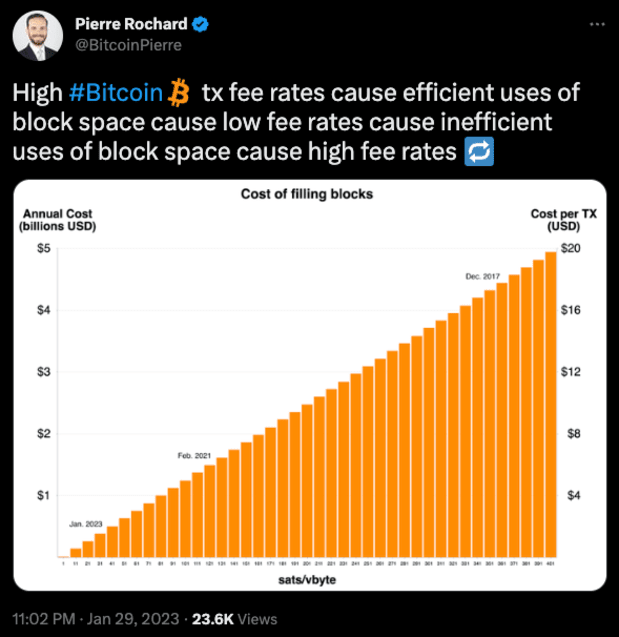
Below are mempool data and fee prices dating back to early 2017. Blockspace tends to be expensive during bull markets, as many people trade bitcoin from exchanges, cold storage, and use it at relatively high exchange rates.
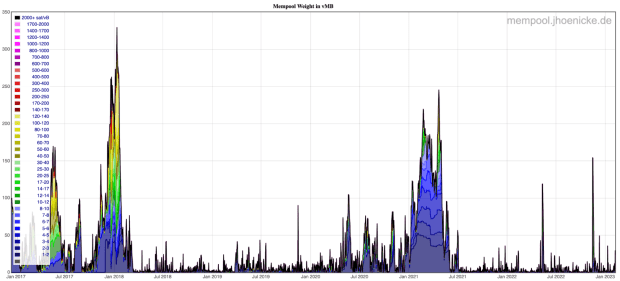

Zooming in on the past three months, it’s clear that bitcoin flew off exchanges in late November and saw a significant number of transactions as users shielded themselves from other potential contagion events.
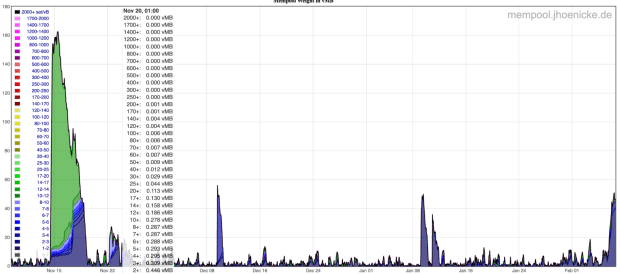
Beyond the extreme case, transaction fees have been low for a long time, and as block subsidies decline and fees need to become a larger percentage of Bitcoin miner revenues, Bitcoin’s long-term security budget Again, the hypothesis from Bitcoin proponents is that as Bitcoin is adopted and scales up, the demand for block space will increase over time and more The idea is that usage moves to other layers built on top of the protocol.
The average block size has increased significantly over the past few weeks.
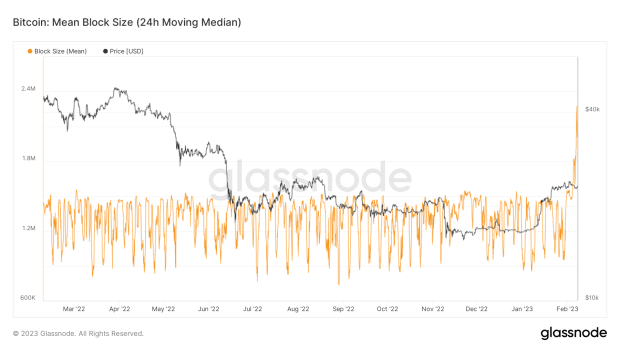
Despite this massive increase in block size, the fee market is still not very competitive. Those who wish to send monetary transactions may increase their fees to include transactions more quickly, and those who wish to create inscriptions without waiting may do the same. This will also increase the profitability of miners who collect additional revenue in block rewards in the form of higher transaction fees.
Transaction fees are still a negligible percentage of mining block rewards, dropping somewhere between 1% and 3%. Will fees start to rise as more people try to use Bitcoin to send money or create inscriptions?
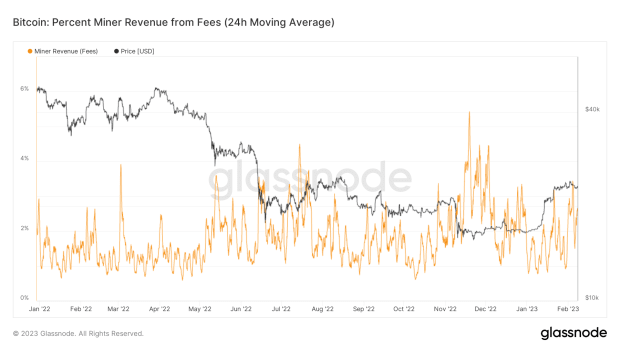
Like this content? subscribe now Receive PRO articles directly in your inbox.


